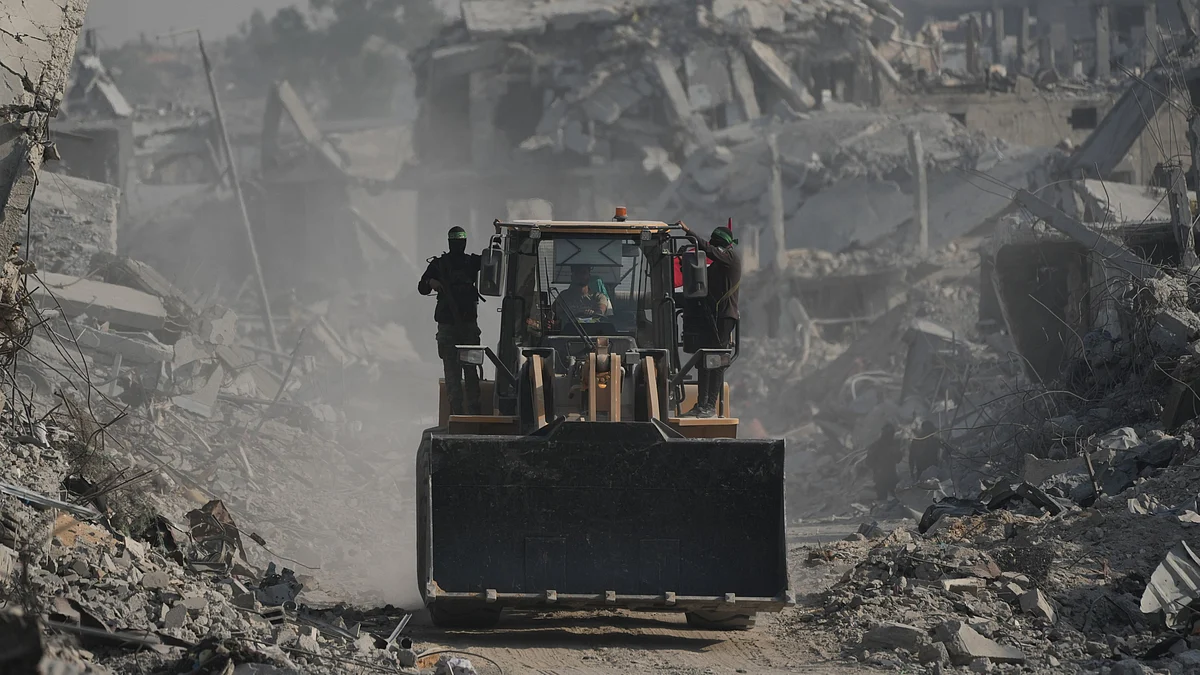White House touts Gaza aid surge, but Palestinians say hunger still grips the Strip
According to the World Food Programme, only half of Gaza’s food requirements are being met

The White House has painted a picture of progress in Gaza, claiming that nearly 15,000 trucks laden with commercial goods and humanitarian relief have crossed into the besieged enclave since 10 October. But on the ground, Palestinians and aid groups tell a far grimmer story — one of scarcity, starvation, and despair.
White House spokesperson Dylan Johnson told Al Jazeera on Sunday that an average of 674 trucks have entered Gaza daily since the Israel-Hamas ceasefire took effect. He said humanitarian workers have “reached more than one million people with household food parcels” and that meal production in the Strip has risen by 82 percent since late September.
“Eggs appeared on shelves in Gaza for the first time since February,” Johnson noted, describing it as a sign of the “historic effort” the United States is leading to meet the critical needs of Gazans. He added that the administration of President Donald Trump remains “committed to treating Palestinians with dignity and respect.”
Yet beyond the optimistic numbers, aid organisations and local authorities describe a different reality — one where food aid barely scratches the surface of what is needed to prevent catastrophe.
According to the World Food Programme (WFP), only half of Gaza’s food requirements are being met. A coalition of Palestinian relief agencies put the figure even lower, saying total aid amounts to barely a quarter of what was agreed under the ceasefire deal. Gaza’s Government Media Office said that since the truce began, only 28 percent of the promised aid — just 4,453 of 15,600 trucks — has entered, averaging a mere 171 trucks per day.
“These limited quantities fall far below the minimum humanitarian threshold,” the office warned, calling for at least 600 trucks daily to supply vital goods — food, medicine, fuel, and cooking gas.
In a searing accusation, the media office accused Israel of “engineered starvation,” claiming authorities have banned over 350 essential food items — including meat, cheese, eggs, and vegetables — while allowing in low-value products such as chocolate, crisps, and soft drinks sold at inflated prices. “The occupation is deliberately using food as a weapon,” the statement said.
Johnson, however, defended US-led relief efforts, saying 17,000 cubic metres (4.5 million gallons) of drinking water are being delivered daily, increasing northern Gaza’s water supply by 130 percent in October alone. “There has been great progress, but there is still much to do,” he said. “This is only the beginning.”
The United Nations Office for the Coordination of Humanitarian Affairs (OCHA) noted modest improvements in southern Gaza, where some families now manage two meals a day — a grim upgrade from the single meal they survived on in July. But in northern Gaza, the situation remains dire, with food insecurity at what the UN calls “catastrophic levels.”
UN spokesperson Farhan Haq said while humanitarian access has improved slightly, “people’s urgent needs are still immense,” as aid convoys remain restricted to only two Israeli crossings. The WFP reiterated its appeal to open all routes into Gaza to allow unrestricted food and medical aid, saying no explanation has been given for the continued closure of northern entry points.
As Washington highlights statistics of “progress”, Gaza continues to choke under the weight of hunger and isolation — its skies quieter under ceasefire, but its people still fighting to survive one meal, one breath, one day at a time.
Follow us on: Facebook, Twitter, Google News, Instagram
Join our official telegram channel (@nationalherald) and stay updated with the latest headlines
